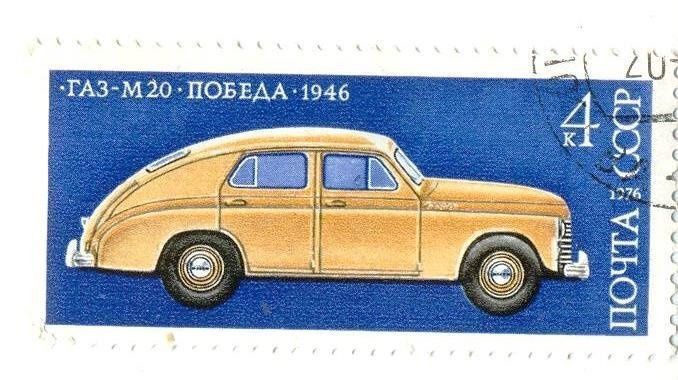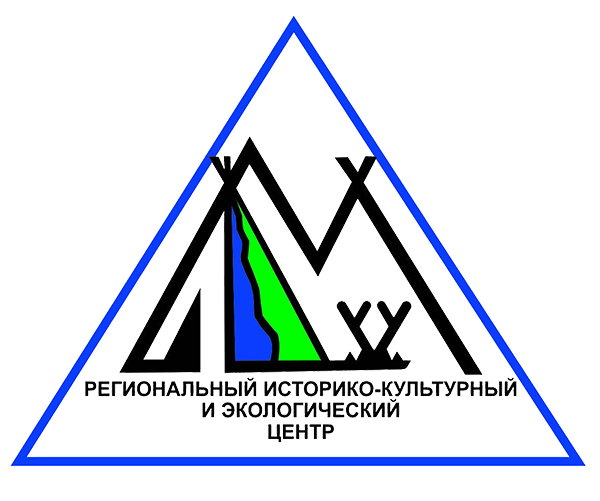Рубрика: Предметы и Факты (+ translation) (от 01.07.2024)

Именно летом в далекие, победные, послевоенные годы с конвейера вышли первые автомобили с говорящим названием - «победа», о них сегодня и поговорим. В конце зимы 1943 года советский изобретатель Андрей Липгарт выступил на массовом совещании Наркомсредмаша с новым планом по разработке автомобилей. Среди предложений была модель «Победа», которая уже имела детальные чертежи и предварительные технические характеристики. Этот автомобиль выделялся оригинальным дизайном и отождествлял важный для СССР символизм окончания войны, что сразу привлекло внимание конструкторов, дизайнеров и инженеров. Даже в условиях войны, когда завод производил в основном танки, бронеавтомобили и «катюши», работа над «Победой» не прекращалась.
Конструкторам удалось изучить передовые достижения европейской и американской автомобильной промышленности. Осенью 1941 года на ГАЗ поступил первый трофейный экземпляр Opel Kapitan 1938 года, признанный лучшим в своём классе. Эта модель была выбрана в качестве прототипа для разработки кузова «Победы», однако по дизайну советский автомобиль значительно отличался от Opel, за исключением некоторых элементов передка, которые были общими для многих американских автомобилей того времени. «Победа» стала уникальной благодаря отсутствию выступающих крыльев, характерных для некоторых предвоенных немецких и чехословацких автомобилей. В процессе разработки конструкторы впервые в Советском Союзе применили сюрфасографию — инновационный метод изображения смежных пространств на одной плоскости. Однако Липгарт столкнулся и с проблемами. Одной из них была нехватка широких металлических листов, необходимых для изготовления крупных деталей будущего ГАЗ М20, что создавало трудности для массового производства.
С июня 1946 года на заводе имени Молотова началось производство автомобиля ГАЗ М-20, который в процессе работы подвергся очередной модернизации кузова. Первые выпущенные автомобили «Победа» распределялись, не поступая в свободную продажу. Производство было весьма ограниченным: за весь 1946 год удалось собрать лишь 23 машины, в основном из-за использования обходной технологии в конструкции. Несмотря на ручную сборку, качество оставляло желать лучшего, что привело к скандалу в 1948 году. Швы и стыки кузовов выравнивались с помощью припоя, на некоторые машины уходило до 200 кг олова. Первые экземпляры имели множество недостатков: с трудом преодолевали крутые подъемы, плохо разгонялись, в салон попадала дождевая вода, а отопление отсутствовало. За первые два года производства было собрано всего 1700 машин.
Все автомобили, выпущенные до сентября 1948 года и имевшие дефекты, были возвращены на завод для устранения проблем. С 1949 года начался выпуск «Победы» второй производственной серии. С этого момента автомобиль приобрел новую жизнь как внутри Союза, так и за его пределами. «Победа» часто участвовала в международных выставках и ярмарках. Со временем лицензию на производство М-20 продали в Польшу, на фабрику FSO, где автомобиль выпускался под маркой «Варшава» в различных версиях на протяжении 22 лет. Сегодняшняя марка была получена нами в дар от Т.М. Леншиной в 2006 году.
#Автомобиль #СССР
It was in the summer in the distant, victorious, postwar years, the first cars with the speaking name - "victory" came off the assembly line, and today we will talk about them. In the late winter of 1943, the Soviet inventor Andrei Lipgart spoke at a mass meeting of the People's Commissariat of the Soviet Union with a new plan for the development of cars. Among the proposals was the Pobeda model, which already had detailed drawings and preliminary technical specifications. This car stood out for its original design and identified an important symbolism of the end of the war for the USSR, which immediately attracted the attention of designers, constructors and engineers. Even in the conditions of the war, when the plant produced mainly tanks, armored cars and "Katyusha", work on the "Victory" did not stop.
The designers managed to study the advanced achievements of the European and American automobile industry. In the fall of 1941, GAZ received the first trophy copy of the 1938 Opel Kapitan, recognized as the best in its class. This model was chosen as a prototype for the development of the "Pobeda" body, but in design the Soviet car differed significantly from the Opel, except for some elements of the front, which were common to many American cars of the time. "Pobeda" was unique due to the lack of protruding fenders, which were characteristic of some pre-war German and Czechoslovak cars. During the development process, the designers used surfasography, an innovative method of depicting adjacent spaces on a single plane, for the first time in the Soviet Union. However, Lipgart also encountered problems. One of them was the shortage of wide metal sheets required for the manufacture of large parts of the future GAZ M20, which created difficulties for mass production.
In June 1946, the Molotov plant began production of the GAZ M-20, which in the process underwent another modernization of the body. The first produced cars "Pobeda" were distributed without going on free sale. Production was very limited: only 23 cars could be assembled for the whole year of 1946, mainly due to the use of bypass technology in the design. Despite the manual assembly, the quality left much to be desired, leading to a scandal in 1948. Seams and body joints were aligned with solder, some cars took up to 200 kg of tin. The first copies had many shortcomings: they could hardly overcome steep climbs, accelerated poorly, rain water got into the cabin, and there was no heating. During the first two years of production only 1700 cars were assembled.
All cars produced before September 1948, which had defects, were returned to the factory to eliminate the problems. Since 1949, the production of "Pobeda" of the second production series began. Since then, the car has acquired a new life both inside the Union and outside it. "Pobeda" often participated in international exhibitions and fairs. Over time, the license for the production of the M-20 was sold to Poland, to the FSO factory, where the car was produced under the brand name "Warsaw" in various versions for 22 years. Today's brand was received by us as a gift from T.M. Lenshina in 2006.
Методист МОД,
Н.С. Сологуб
Конструкторам удалось изучить передовые достижения европейской и американской автомобильной промышленности. Осенью 1941 года на ГАЗ поступил первый трофейный экземпляр Opel Kapitan 1938 года, признанный лучшим в своём классе. Эта модель была выбрана в качестве прототипа для разработки кузова «Победы», однако по дизайну советский автомобиль значительно отличался от Opel, за исключением некоторых элементов передка, которые были общими для многих американских автомобилей того времени. «Победа» стала уникальной благодаря отсутствию выступающих крыльев, характерных для некоторых предвоенных немецких и чехословацких автомобилей. В процессе разработки конструкторы впервые в Советском Союзе применили сюрфасографию — инновационный метод изображения смежных пространств на одной плоскости. Однако Липгарт столкнулся и с проблемами. Одной из них была нехватка широких металлических листов, необходимых для изготовления крупных деталей будущего ГАЗ М20, что создавало трудности для массового производства.
С июня 1946 года на заводе имени Молотова началось производство автомобиля ГАЗ М-20, который в процессе работы подвергся очередной модернизации кузова. Первые выпущенные автомобили «Победа» распределялись, не поступая в свободную продажу. Производство было весьма ограниченным: за весь 1946 год удалось собрать лишь 23 машины, в основном из-за использования обходной технологии в конструкции. Несмотря на ручную сборку, качество оставляло желать лучшего, что привело к скандалу в 1948 году. Швы и стыки кузовов выравнивались с помощью припоя, на некоторые машины уходило до 200 кг олова. Первые экземпляры имели множество недостатков: с трудом преодолевали крутые подъемы, плохо разгонялись, в салон попадала дождевая вода, а отопление отсутствовало. За первые два года производства было собрано всего 1700 машин.
Все автомобили, выпущенные до сентября 1948 года и имевшие дефекты, были возвращены на завод для устранения проблем. С 1949 года начался выпуск «Победы» второй производственной серии. С этого момента автомобиль приобрел новую жизнь как внутри Союза, так и за его пределами. «Победа» часто участвовала в международных выставках и ярмарках. Со временем лицензию на производство М-20 продали в Польшу, на фабрику FSO, где автомобиль выпускался под маркой «Варшава» в различных версиях на протяжении 22 лет. Сегодняшняя марка была получена нами в дар от Т.М. Леншиной в 2006 году.
#Автомобиль #СССР
It was in the summer in the distant, victorious, postwar years, the first cars with the speaking name - "victory" came off the assembly line, and today we will talk about them. In the late winter of 1943, the Soviet inventor Andrei Lipgart spoke at a mass meeting of the People's Commissariat of the Soviet Union with a new plan for the development of cars. Among the proposals was the Pobeda model, which already had detailed drawings and preliminary technical specifications. This car stood out for its original design and identified an important symbolism of the end of the war for the USSR, which immediately attracted the attention of designers, constructors and engineers. Even in the conditions of the war, when the plant produced mainly tanks, armored cars and "Katyusha", work on the "Victory" did not stop.
The designers managed to study the advanced achievements of the European and American automobile industry. In the fall of 1941, GAZ received the first trophy copy of the 1938 Opel Kapitan, recognized as the best in its class. This model was chosen as a prototype for the development of the "Pobeda" body, but in design the Soviet car differed significantly from the Opel, except for some elements of the front, which were common to many American cars of the time. "Pobeda" was unique due to the lack of protruding fenders, which were characteristic of some pre-war German and Czechoslovak cars. During the development process, the designers used surfasography, an innovative method of depicting adjacent spaces on a single plane, for the first time in the Soviet Union. However, Lipgart also encountered problems. One of them was the shortage of wide metal sheets required for the manufacture of large parts of the future GAZ M20, which created difficulties for mass production.
In June 1946, the Molotov plant began production of the GAZ M-20, which in the process underwent another modernization of the body. The first produced cars "Pobeda" were distributed without going on free sale. Production was very limited: only 23 cars could be assembled for the whole year of 1946, mainly due to the use of bypass technology in the design. Despite the manual assembly, the quality left much to be desired, leading to a scandal in 1948. Seams and body joints were aligned with solder, some cars took up to 200 kg of tin. The first copies had many shortcomings: they could hardly overcome steep climbs, accelerated poorly, rain water got into the cabin, and there was no heating. During the first two years of production only 1700 cars were assembled.
All cars produced before September 1948, which had defects, were returned to the factory to eliminate the problems. Since 1949, the production of "Pobeda" of the second production series began. Since then, the car has acquired a new life both inside the Union and outside it. "Pobeda" often participated in international exhibitions and fairs. Over time, the license for the production of the M-20 was sold to Poland, to the FSO factory, where the car was produced under the brand name "Warsaw" in various versions for 22 years. Today's brand was received by us as a gift from T.M. Lenshina in 2006.
Методист МОД,
Н.С. Сологуб
